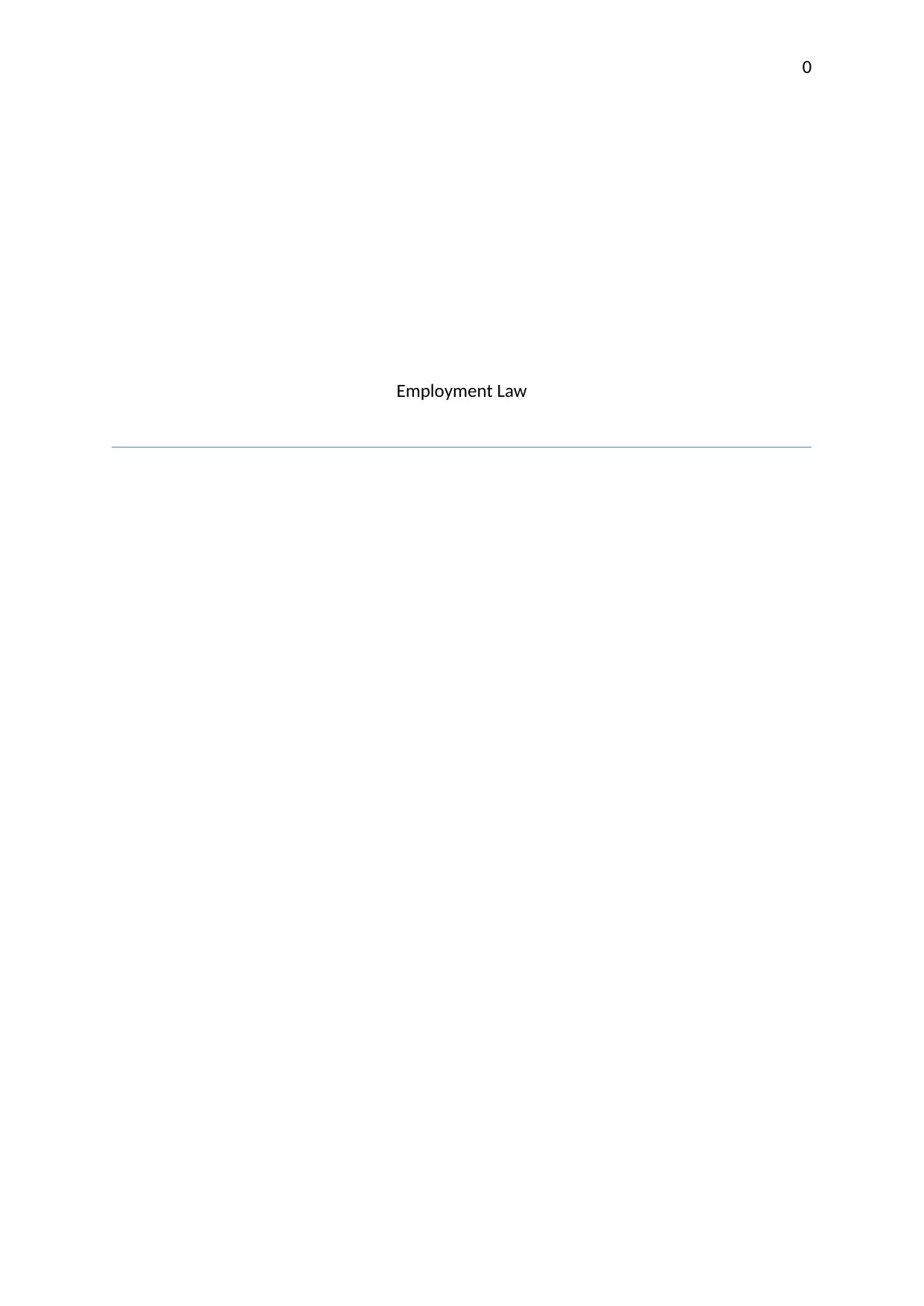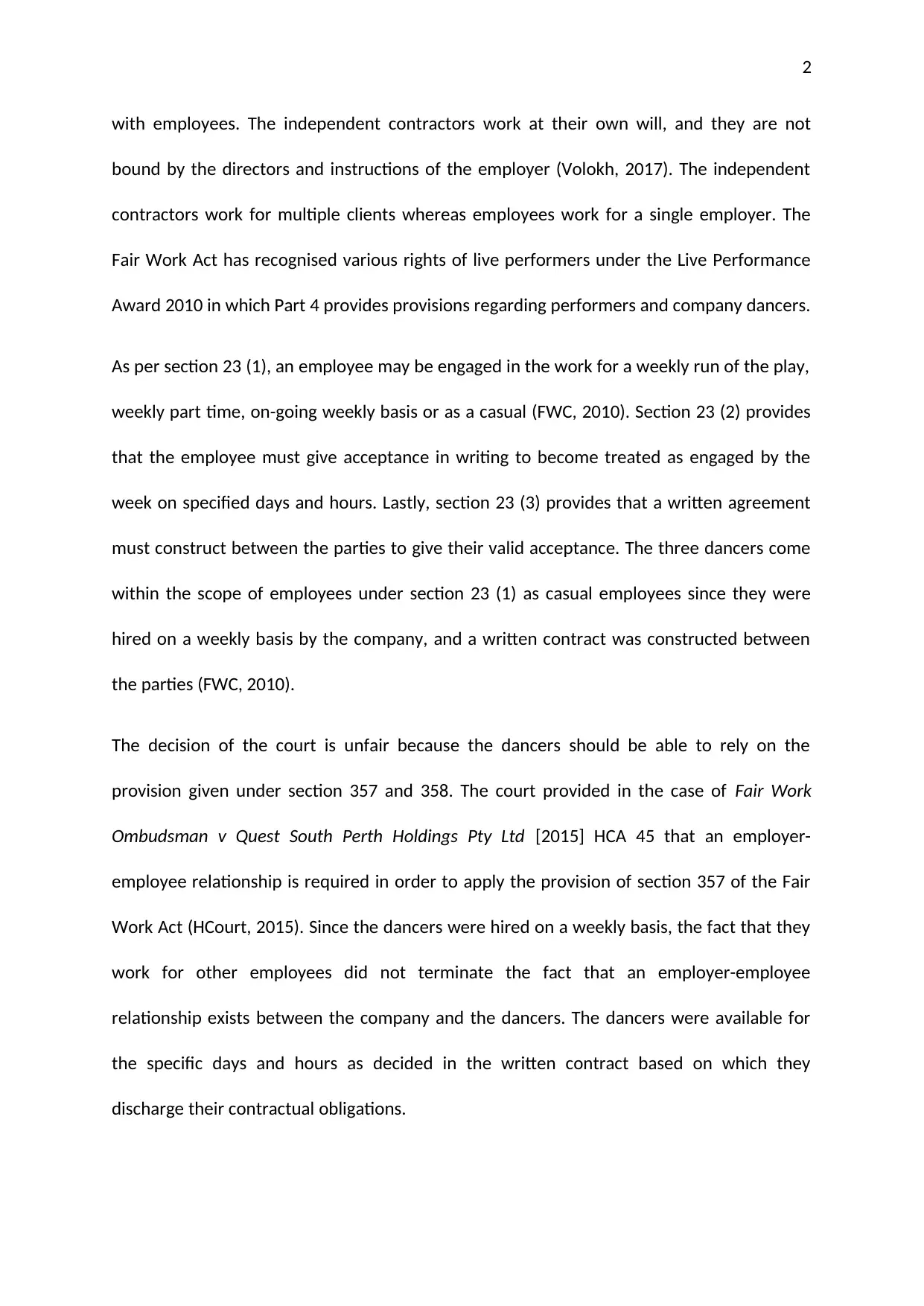Employment Law Report: Actors' Case and Fair Work Act Analysis
VerifiedAdded on 2023/01/18
|5
|1026
|54
Report
AI Summary
This report analyzes the legal issues arising from the case of three actors hired by the Victorian Department of Premier and Cabinet, focusing on whether they were employees or independent contractors under the Fair Work Act 2009. The report discusses the key legal issues, including misrepresentation and the distinction between employees and independent contractors, referencing relevant sections of the Fair Work Act and the Live Performance Award 2010. It examines the court's decision in Jensen v Cultural Infusion (Int) Pty Ltd, arguing that the actors should have been considered employees based on their contractual arrangements and the employer-employee relationship. The report concludes that the court's decision was unfair, as the actors were subject to the company's direction and control, thus warranting protection under the Fair Work Act. The analysis also references the case of Fair Work Ombudsman v Quest South Perth Holdings Pty Ltd to support the argument that an employer-employee relationship existed, and therefore the actors could hold the company liable under sections 357 and 358 of the Act.
1 out of 5












![[object Object]](/_next/static/media/star-bottom.7253800d.svg)